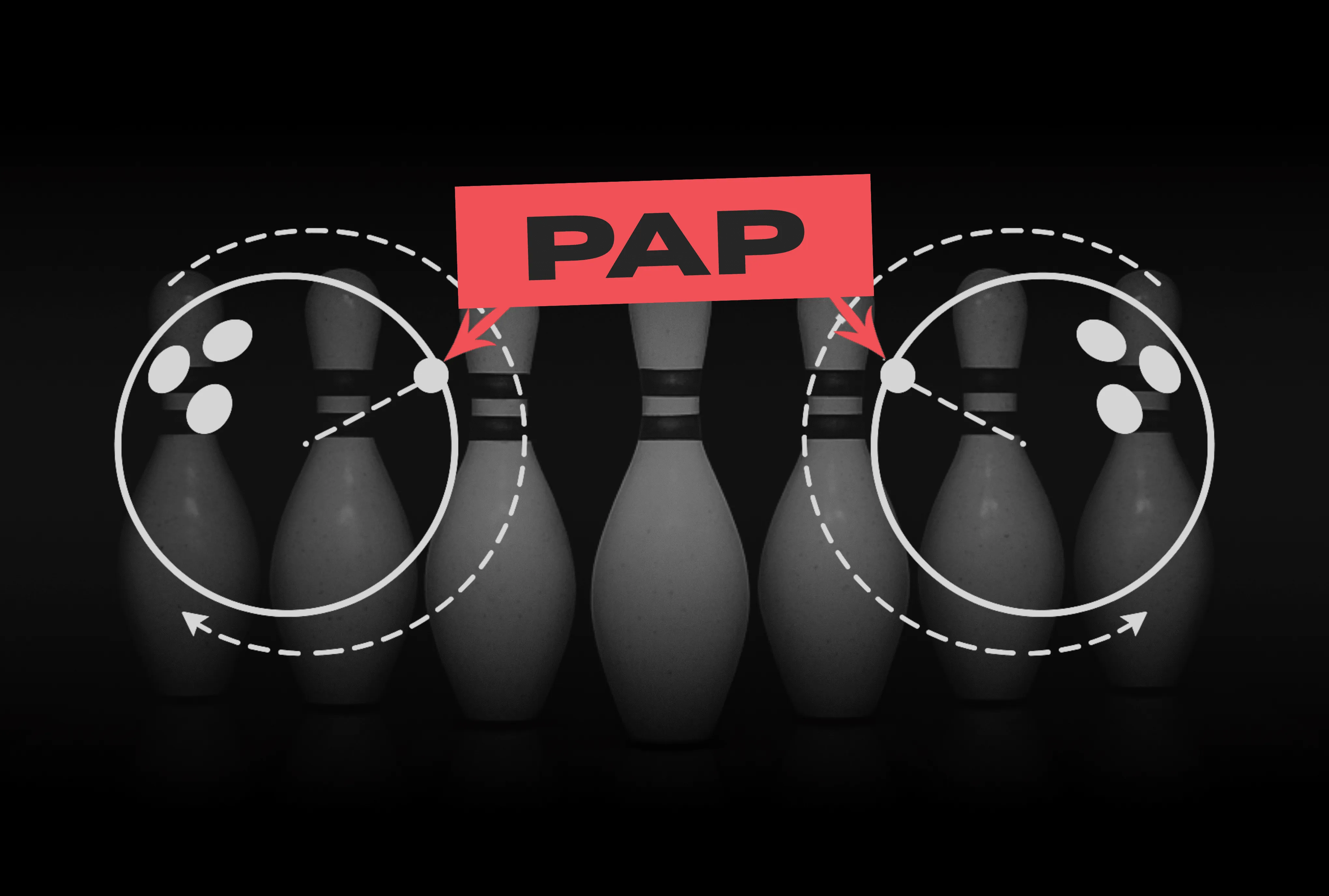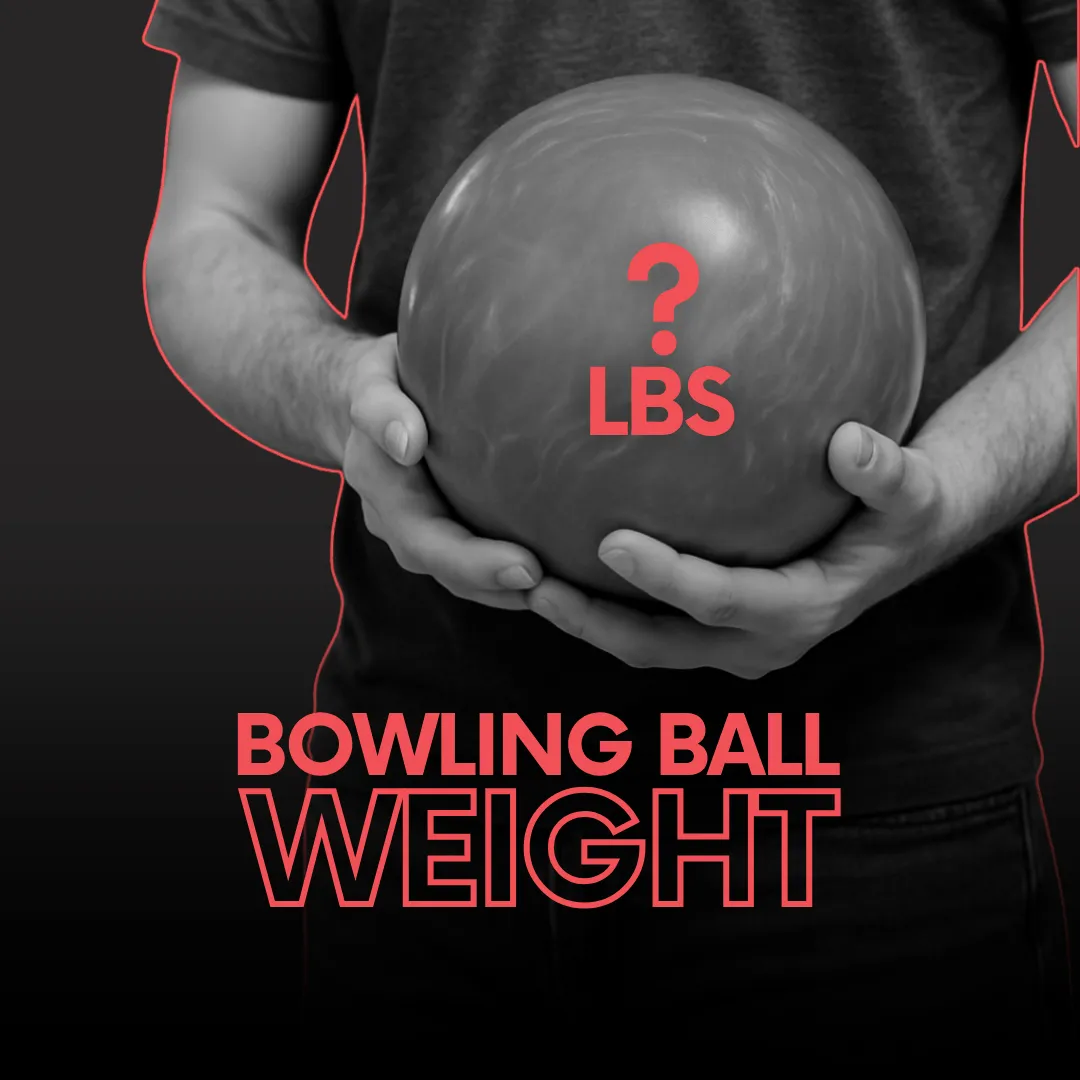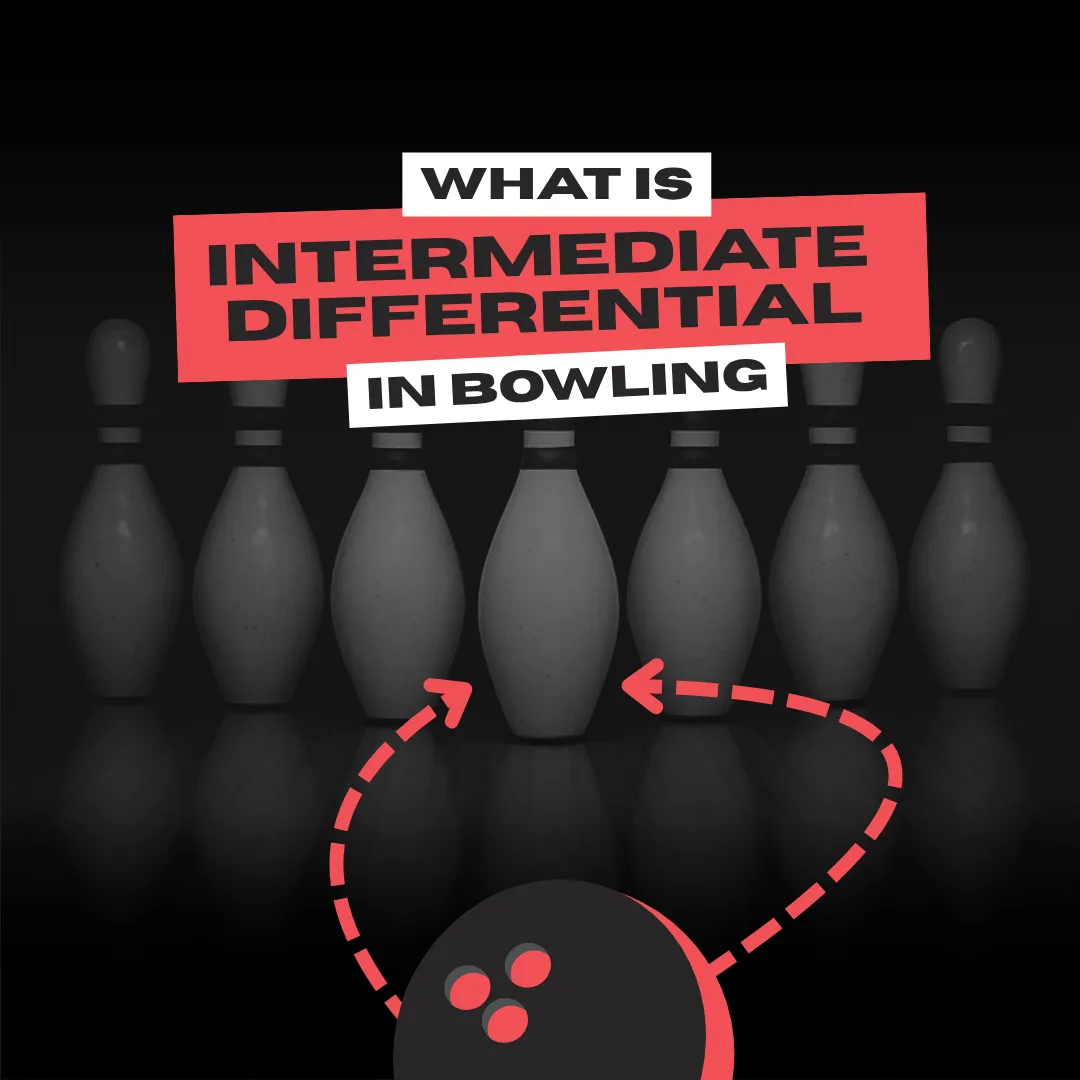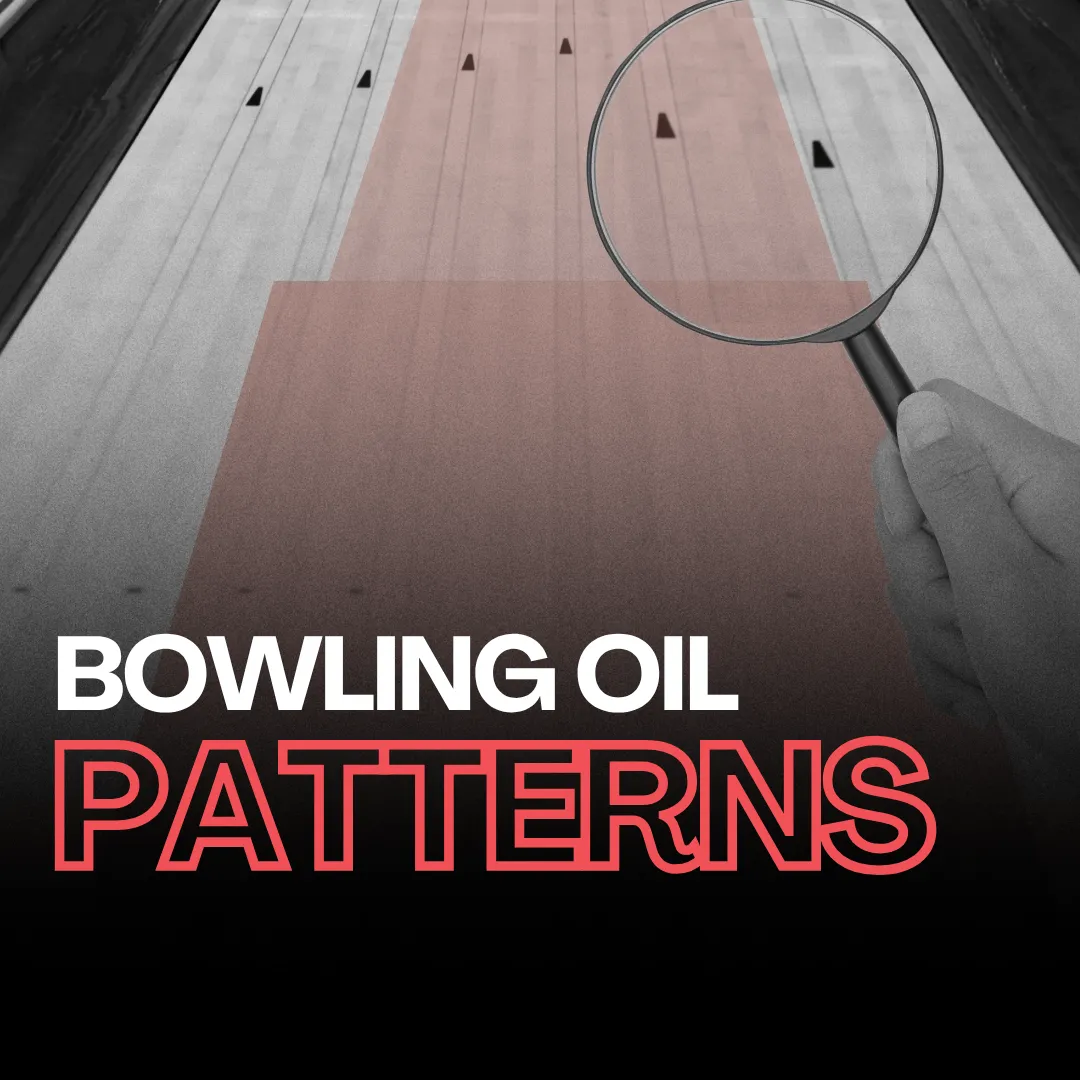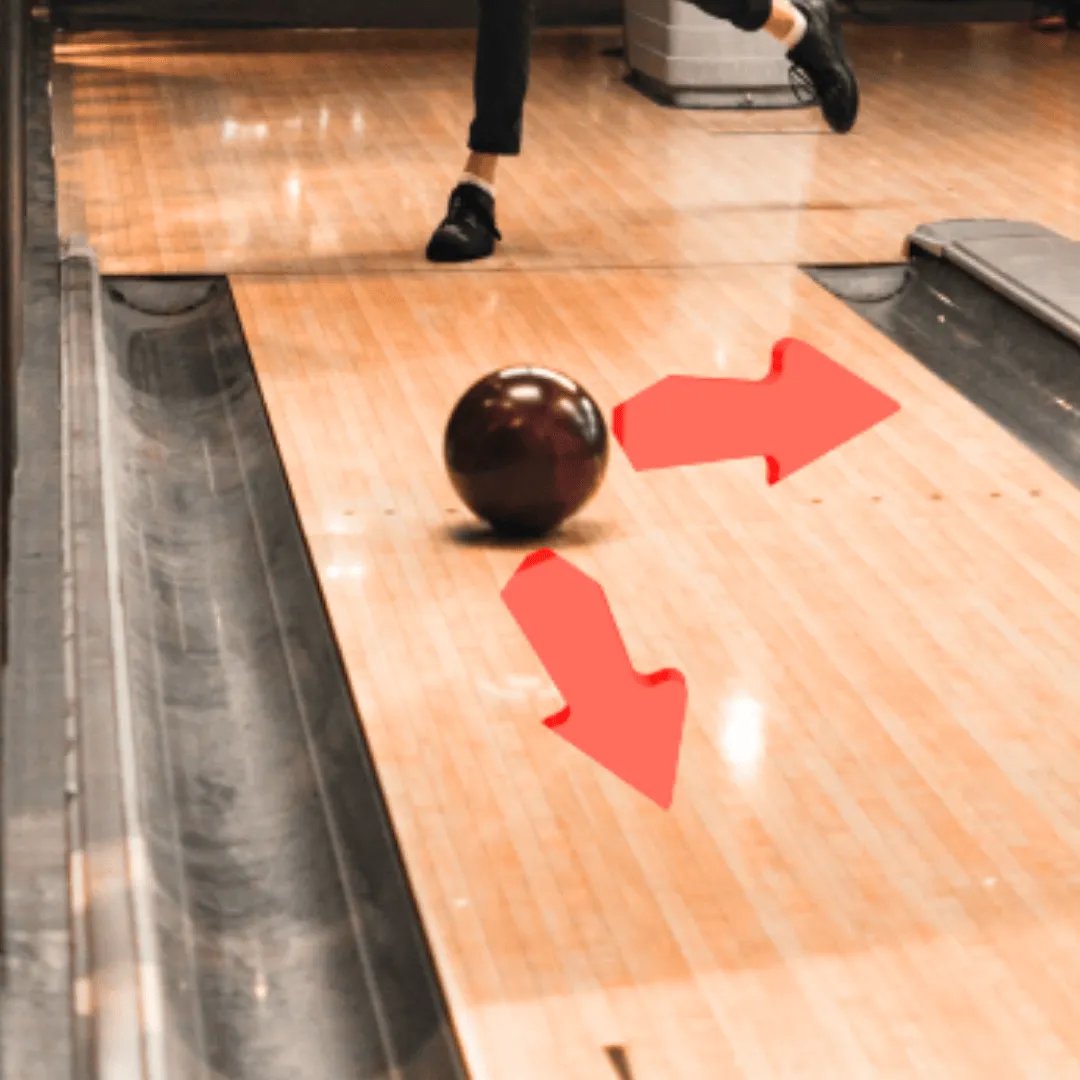Ever heard someone talk about "PAP" in a pro shop or YouTube video and thought, what the heck are they talking about?
If you’re just getting into bowling and only use house balls, you don’t need to fill your head with information about PAP just yet. But if you’ve bought a new bowling ball (or planning to), knowing your PAP is one of the best ways to get your gear dialed in for your unique style.
PAP is like your fingerprint in bowling - there are so many different styles and releases that almost every bowler has their own unique PAP. Knowing yours helps ensure the ball is working with your style, not against it.
In this article, we’ll explain what PAP really means in bowling, how to find your own PAP, what “pin-to-PAP” distance is, why it matters when choosing or drilling a bowling ball, and how to use PAP to your advantage.
Some links in this article are affiliate links. If you make a purchase, we may earn a small commission at no extra cost to you. This helps support BowlingLife and keeps our content free for everyone.

What Does PAP Mean in Bowling?
PAP, or Positive Axis Point, is the point on the surface of the bowling ball that marks the center of its initial axis of rotation. In less complicating words, it is essentially the spot your ball rotates around.
Just like the Earth rotates around its axis, a bowling ball rotates around its own. At the end of this axis is a point called the Positive Axis Point, or PAP.
Why Is PAP So Important?
A bowling ball might just seem like a piece of concrete, but it is much more than that. It is a complex sports tool and there are many things affecting your ball's motion rather than just two or three drilled finger holes. One of such things is your PAP.
Knowing your PAP allows you (or your pro shop operator) to place the pin and mass bias (core) closer to or farther from your PAP to create the desired ball reaction that match your natural release and complement your current bowling ball arsenal.
That helps to choose the right layout, that shapes how the ball behaves on the lane.
Understanding the PAP leads to:
- More consistent bowling ball reaction
- Better use of the core’s flare potential
- Smarter arsenal building for different lane conditions
How to Measure Your PAP (Step-by-Step)
To measure your PAP, we highly recommend visiting your local pro shop to have it measured correctly. A pro shop operator can then suggest the best layout based on your PAP and the ball motion you’re aiming for.
However, if you’re a bowling geek like us and want to learn the basics of measuring your PAP yourself, you can absolutely give it a try.
We suggest using an Armadillo PAP locator tool or a bowling ball spinner (this can also be used for bowling ball resurfacing) to help identify your PAP accurately.
Step 1: Throw a Shot
Throw a couple of shots with your strike ball on a fresh oil pattern. Do not use a plastic spare ball as measurements might be inaccurate.
Step 2: Observe the First Oil Ring
Once you've done a couple of shots, put a bowling ball on the table. Look at the track flare - trace the first oil ring closest to the fingers with a wax pencil around the ball.
Step 3: Mark the PAP
Once you’ve traced the first oil ring around the ball, take an Armadillo PAP finder tool and place it on the surface. Find the track on the Armadillo that best matches the traced oil ring and line it up carefully.
Once aligned, mark the PAP dot - you’ll find the marking point on the side of the Armadillo (right side for right-handers, left side for left-handers).
If you don’t have an Armadillo, you can use a bowling ball spinner instead. Place the ball in the spinner with the marked oil ring aligned as evenly as possible with the edges of the spinner's cup.
Turn the spinner on, and mark the very top of the ball with a pencil - that’s your PAP.
Step 4: Mark Center of the Grip
First of all, draw a center line of your bowling ball. The line goes through the middle of your fingers and the center of your thumb hole.
Then, find an average of the span. Measure the distance between the center of your thumb hole to the center of your finger holes and divide that number by 2. That's the center of your grip.
Step 5: Measure Your PAP Coordinates
Draw a line around the ball through the center of your grip. Then, measure the distance from the center of your grip to the PAP dot—this will be the first number of your PAP coordinates (for example: 5 1/8" over).
Next, measure the vertical distance from the PAP to the line you drew around your grip center—this gives you the second number (for example: ¾" up).
Once you know your PAP coordinates, you can drill future bowling balls however you like - without needing to remeasure your PAP each time.
There a dozens of videos on how to measure your PAP on YouTube both for one-handers and two-handers.
What Is Pin-to-PAP Distance?
Now when we know what does PAP mean, we can discuss the importance of "pin-to-PAP distance". "Pin-to-PAP" is the length between the pin and your Positive Axis Point, and it's a crucial factor in shaping ball motion.
This measurement plays a big role in determining how much the ball will flare and when it will hook.
A shorter pin-to-PAP distance typically makes the ball hook earlier and more strongly - great for heavier oil.
A longer distance, on the other hand, helps the ball skid longer before hooking, which works better on drier lanes. Understanding this is essential when choosing the right layout to match your game.

Why On Earth Should I Care About PAP?
By adjusting your layout based on your PAP, you can control:
- How early or late the ball starts to hook
- How strong the backend motion is
- How much the ball flare
That’s why top bowlers always drill balls based on their personal PAP.
FAQ
What is PAP in bowling terms?
PAP stands for Positive Axis Point—the spot on the ball that marks the center of its rotation.
How do I find my PAP in bowling?
You can measure it by tracing the first oil ring and using tools like the Armadillo or a spinner.
Does PAP change over time?
It may change slightly if your release changes significantly.
Why is pin-to-PAP distance important?
It affects how early or late the ball hooks, which can help you match your ball layout to lane conditions.
